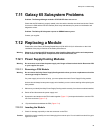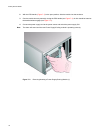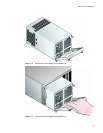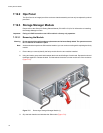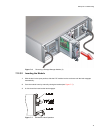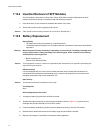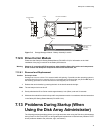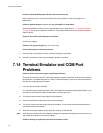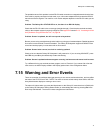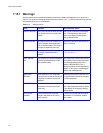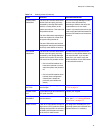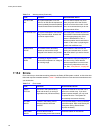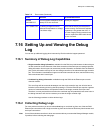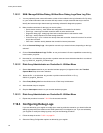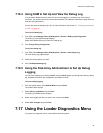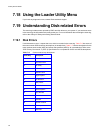Galaxy 65 Troubleshooting
77
The probable cause of this problem is a bad RS-232 cable connection or swapped transmit/receive lines.
If the cable is properly connected on both ends, try a null modem adapter that will reverse the RS-232
transmit and receive signals. The need for a null modem adapter depends on the RS-232 cable you are
using.
Problem: The Galaxy 65’s STATUS LED is on, but there is no RS-232 display.
Check that the RS-232 cable is the correct type (straight-through). Check that the terminal emulation
utility on the computer system is properly configured. See Appendix B section B.2.2, ”Accessing the Disk
Array Software Using the Ethernet Port”, on page 99.
Problem: Screen is updated, but will not respond to keystrokes.
Be sure you are using a straight-through serial cable or try using a null modem adapter. Disable hardware
flow control on the terminal or terminal emulator. The Galaxy 65 Subsystem supports XON/XOFF flow
control and works properly in most cases with no flow control.
Problem: Screen looks correct, but clock is not being updated.
Check to be sure that the Galaxy 65 Subsystem is still powered on. If you are using XON/XOFF, press
the CTRL key and Q key simultaneously to start data flowing.
Problem: Screen is updated and menus appear correctly, but boxes around menus look incorrect.
Try a different font in your terminal emulator program, such as Terminal. If you cannot find a font that
looks correct, set ASCII Display to Yes in the Display options item of the Configuration Menu.
7.15 Warning and Error Events
There are a number of conditions that trigger warning or error events, activate the alarm, and may affect
the state of the STATUS and FAULT LEDs. The alarm or buzzer sounds mainly when SAM or the Disk
Array Administrator displays a warning or error event.
The alarm will silence when you press the Mute button on the Galaxy 65, mute the alarm in SAM (refer
to the Galaxy 65 Subsystem Getting Started Guide) or acknowledge the event by pressing
Esc
in the
Disk Array Administrator. The events in these categories are listed below.



